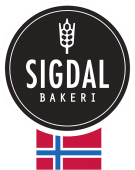
The secret of Norwegian nutrition
The recommendations of the Eat-Lancet Commission report (aiming to find a balanced and environmentally friendly diet for the future) published in January 2019 give the following graph in terms of ideal consumption

From this computer graphics, we can draw the following conclusions:
The French diet is unbalanced
If the French consume a satisfactory quantity of the three families of nutrients (lipids, carbohydrates and proteins), the real issue is quality.
Their diet includes:
- too much saturated fat, not enough polyunsaturated fat (e.g. omega 3)
- too many simple carbohydrates, not enough complex carbohydrates and fibre
- too much animal protein, not enough vegetable protein
- often unsatisfactory vitamin and mineral intakes
In short, the calories ingested by the French are not efficient enough.
Norwegians' diet is effective
Faced with the harshness of the climate, the Scandinavian peoples have learned to make the most of their environment. Norwegian crisp bread, also known as knekkebrod, is a Scandinavian staple food, consisting of wholemeal rye flour, water and salt. Seeds were later added to improve the recipes, both for their taste and their incredible nutritional density.
The Vikings used to bake flatbread on hot stones. Traditionally, it was baked only twice a year: once after the harvest and again in the spring, when the frozen waters of the rivers began to flow again.
Sigdal is the direct heir to this tradition of efficiency. Entirely made of natural products (seeds and cereals), Sigdal crackers are a source of vegetable proteins, rich in fibre, vitamins, iron and low in sugar.
The 3 main seed families and their benefits
- The starchy seeds which contain about 70% carbohydrates: these are in fact cereals, such as oats, wheat, corn, spelt, barley, rye, rice, buckwheat ...
- Protein seeds which contain 45% protein : these are the ones best known as legumes such as chickpeas, broad beans, lentils, mung beans, azuki, soybeans...
- Oilseeds that contain 50% fat: these are the ones that interest us because they are the basis of the composition of the Norwegian Sigdal crunchy: flax seed, pumpkin seed, sesame seed, sunflower seed, poppy seed, hemp, chia...
Summary of what they contain:
- Lipids, in particular essential fatty acids or polyunsaturated fatty acids: Omega 3 (alpha linolenic acid) and Omega 6 (linoleic acid). As our body does not naturally synthesize some of their components (alpha linolenic acid and linoleic acid), we must therefore draw them from our food, such as from fatty fish or oleaginous seeds, such as linseed, rapeseed and walnuts...
- Proteins
- Few carbohydrates
- Soluble and insoluble fibre
- Nutrients: vitamins, minerals, trace elements...

